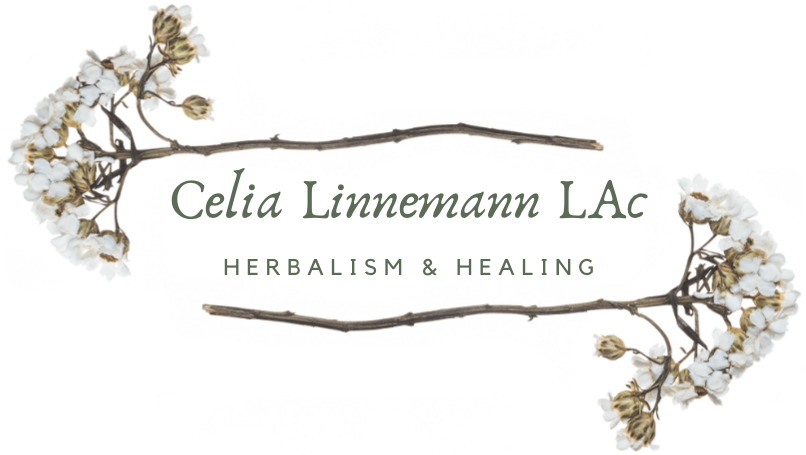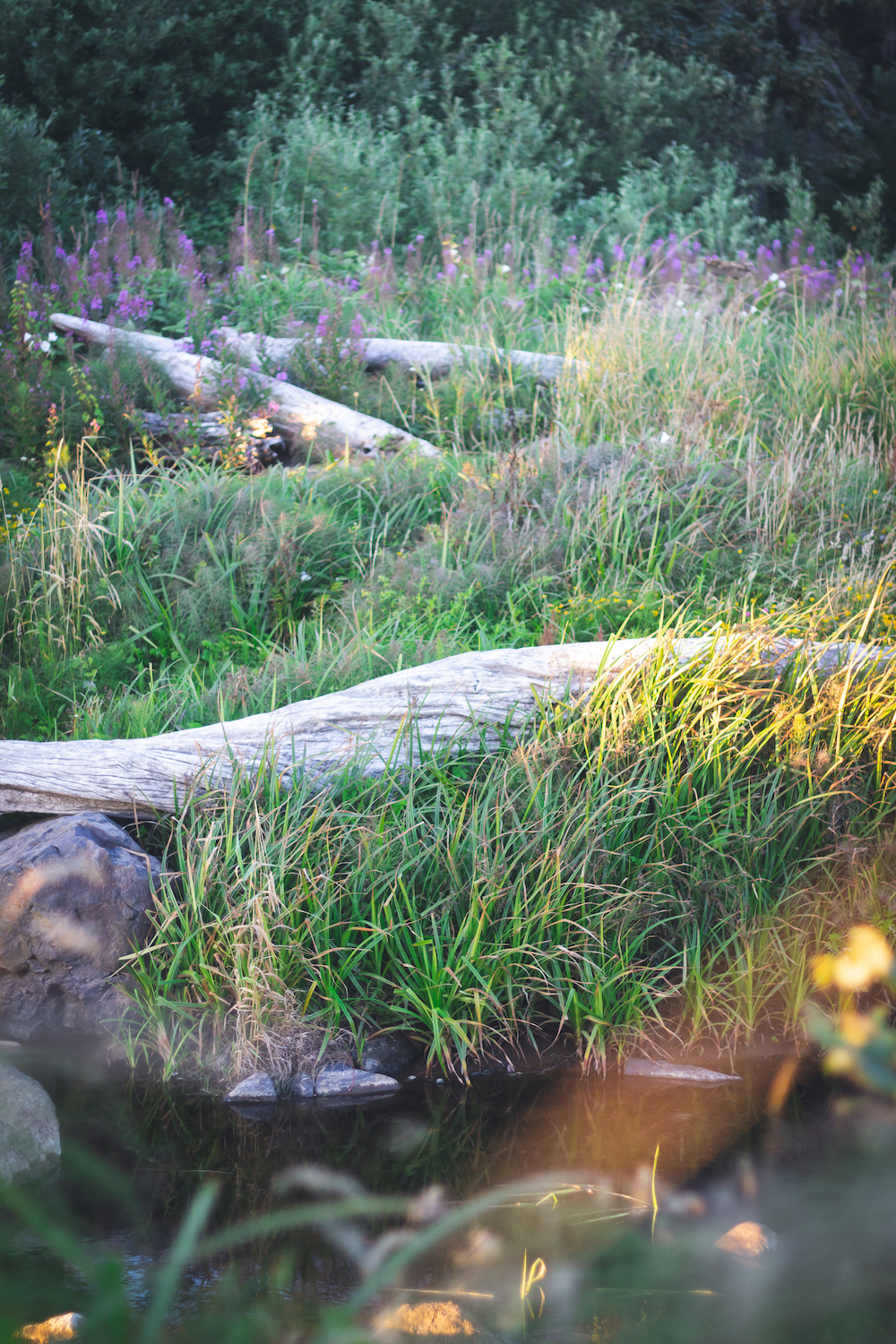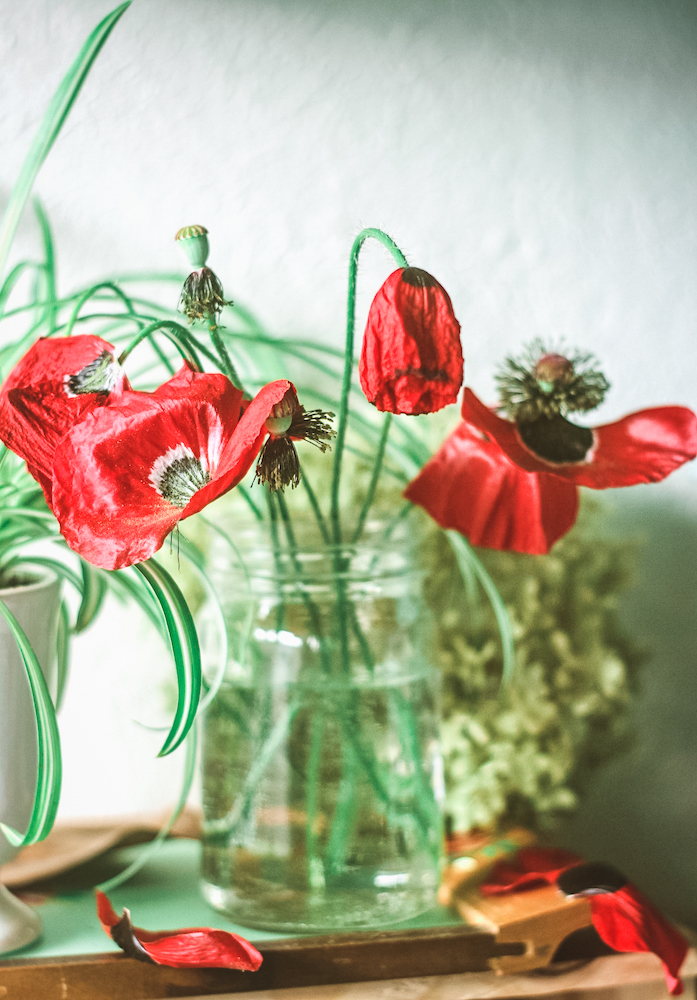5 things you need to know about herbal Lyme treatment
There is no doubt that herbs are incredibly useful for addressing Lyme and the co-infections. But since herbalism is a new concept for many people in the modern world, using an herbal Lyme treatment (and other natural products and/or supplements, nutrients, ect…) is wrought with misconceptions and confusion about how to take them.
In this article I want to talk about a few things to consider if you are new to the idea of using herbs for Lyme disease.
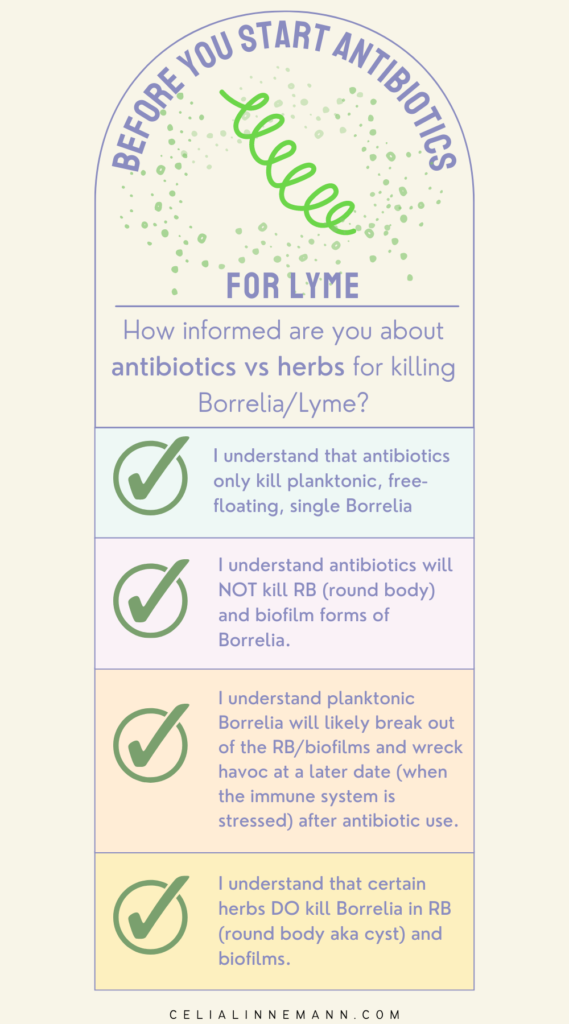
Information is power
You do not need to be an herbal expert, but at least a little bit of information can aid you greatly on your healing journey.
Part of what informs my practice of herbalism is my past work as a birth doula. It was there that I saw first hand that the more well-informed people were regarding their medical care, the more empowered they could be.
Imagine two people were given the option to have a cesarean birth. One was not told of the risks and challenges they could have postpartum, while the other person was counseled about what their experience could be like. Who do you think would feel more prepared during the postpartum time?
Of course, the person with more information will have more skills to fare whatever the postpartum time will give them. This doesn’t mean they won’t have problems, but having more information helps them adjust their expectations, which can give you more resiliency.
The same, I believe, is true for questioning how, when and if herbs are a good match for you while addressing Lyme, Bartonella, Mycoplasma and the other co-infections.
5 things you need to know about herbal Lyme treatment
- You can take herbs alongside antibiotics.
- Herbs can kill bacteria in round body (aka cyst) and biofilm forms. Antibiotics can only kill free-floating single bacteria.
- Herbs combat illness through a variety of actions, not just killing bacteria.
- Using herbs correctly has a learning curve and takes some effort, but you can easily learn about what to do in a variety of resources.
- Herbs may not be very expensive in and of themselves, but it is an out-of-pocket cost.

1. You can take herbs alongside antibiotics.
If you are not interested or comfortable venturing into the herbal-only land of Lyme and co-infection treatment, know that herbs are not an all-or-nothing modality. You can dabble at your own pace and still receive some (or a lot of) benefit.
Emerging research is showing that herbs are not only safe to take with antibiotics, but that certain herbs can potentiate antibiotics. This means antibiotics combined with herbs are more effective (work better) than antibiotics alone.
Exactly which herbs to take and what your overall healing strategy consists of will vary from person to person, and should be an article of its own (probably the first herb I’d recommend adding is Japanese Knotweed because of its endothelial protective properties).
But pretty much any herbs will potentiate antibiotics (some will do it much better than others, like berberine containing herbs) since ALL plants have a plethora of anti-microbial chemical constituents within them. This is because plants have been in an arms race against bacteria, viruses and so on since they have evolved on the planet. If plants did not have a robust defense against microbes, they would’ve never made it.

2. Herbs can kill bacteria in round body (RB or cyst) and biofilm forms. Antibiotics can only kill free-floating, planktonic, single bacteria.
This is a biggie: Herbs eradicate bacteria in any of their forms. Antibiotics can only kill free form bacteria.
I hope that antibiotics will become more sophisticated as more research funding for Lyme is available. There are better results when antibiotics combined, which is a step in the right direction, as noted with Bartonella infections.
But for now, antibiotics only kill free floating single bacteria, but Borrelia (and the other co-infections), because it is a vector-borne bacteria, is pleomorphic. It takes many shapes. It can be a single cell bacteria, but most often it is in community with other bacteria in what is known as a biofilm or round body form (abbreviated RB, also called a cyst).
One of the most amazing things about herbs is that they can outsmart bacteria in biofilms. Some herbs prevent what is known as “quorum sensing”, a thing bacteria do to call and move other bacteria to it. In this way, herbs stop the formation of biofilms in the first place.
Secondly, some herbs inhibit efflux pumps. Efflux pumps are in the outer layer of the biofilm or bacteria. When an antibiotic goes into the bacteria cell, the efflux pump immediately pumps it right back out. I hate to day it, but bacteria are surprisingly smart. Some herbs stop the efflux pumps form working, so the antibacterial agent can go into the cell and stay there, hopefully killing the bacteria or having actions that lead to its death.
Even before I knew I had Lyme myself, I was incredibly interested in how herbs can work with resistant infections like MRSA, CDiff, chronic UTIs, chronic sinus infections, chronic ear infections and so on. Mostly because they work so well when nothing else does.

3. Herbs combat illness through a variety of actions, not just killing bacteria
I hope hope hope that people see that herbs have a variety of actions and uses when working with Lyme and the co-infections besides just killing bacteria.
One such action is the numerous ways they can be anti-inflammatory. Herbs can interrupt the pro-inflammatory cytokine cascades which cause the infection to penetrate into the body and cause all sorts problems like debilitating flares.
For example, in Bartonella infections, the cytokines NF-κB and IL-8 are very active in causing infections and thus making symptoms. VEGF, PTPs, EGF, ERK-1, ERK-2, PI3K are next most active cytokines. Certain herbs and nutritional supplements can down-regulate these inflammatory agents substantially.
“Reducing levels/inhibiting production of these have been found to short circuit the cytokine cascade, stop endothelial proliferation, significantly reduce or halt symptoms”
Buhner in the Bartonella book – sorry I lost the page number
Some herbs repair long-term damage from the Borrelia and the co-infections from wrecking havoc (here’s were I mention Japanese Knotweed again!). Antibiotics do not.
Some practicalities to be aware of when thinking of using herbs
There are two reasons why herbs may not hard to approach. As much as I love them, I need to be realistic about the practicalities of using them in everyday life.
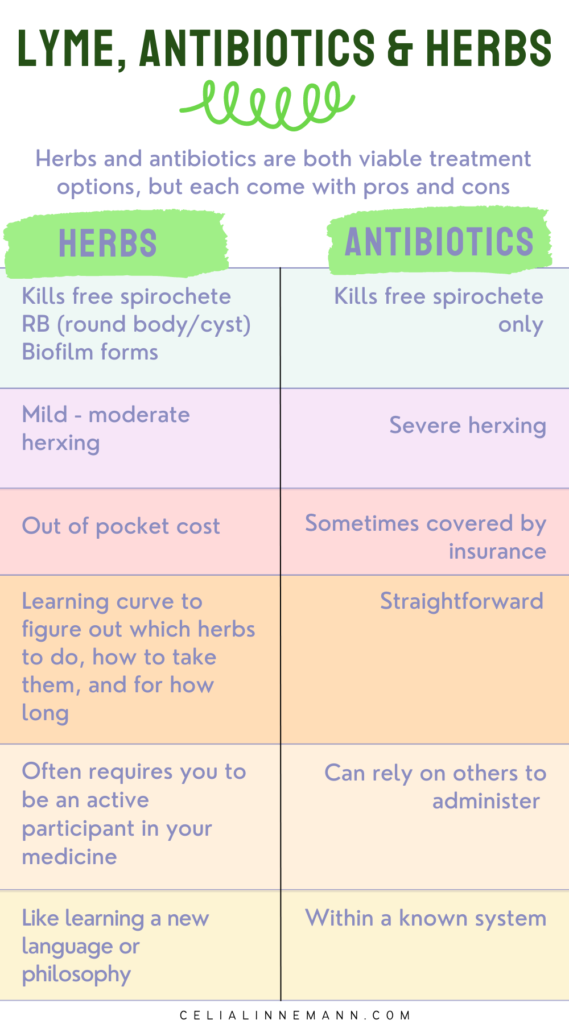
4. Using herbs correctly has an ongoing learning curve
…but you can easily learn about what to do in a variety of resources.
Using herbs is part of a do-it-yourself approach to Lyme and the co-infections and it requires, at the very least, getting some Lyme books and spending a few hours reading through the protocols.
The thing is, once you start looking into herbs (and nutrients in the form of supplements and natural products), you will find that it can very much be a life-long learning endeavor because there is so much to learn.
You absolutely do not need to be a trained herbalist to use herbs for healing from Lyme and the co-infections, just like how you do not need to be a trained chef to cook healthy, delicious and appealing food for yourself and your family.
However, you do need to dip your toes into the herbal books or other resources to get started, and that can take time and discernment.
When you are sick with Lyme and the co-infections (or any other chronic or acute illness or pain, fatigue, ect…) your brain is probably inflamed. It can be exceedingly hard to have the focus, comprehension and decision making abilities to follow through the process getting the books, delving though the chapters, writing out your protocol, researching where to order the products and then remembering to take them multiple times a day, every day for probably years.
For this reason and many others, I 100% understand why people who chose to do a more straight-forward treatment like antibiotics, whether its is IV or oral.
Herbalism can be like learning a new language, a new cosmology (aka way to understand the world around you), a new belief system. At one time, all humans were skilled in working with plants, but that is a way of life that many of us have been ancestrally and culturally cut off from for generations.
It takes a little effort, not to mention a leap of faith, to re-learn that plants can be medicinal and trust our ability to use them effectively.
We have been told for over a century now that biochemical medicine is more real than anything else (at the turn of the 1900’s, plant medicine was still the main accepted pharmacopeia in the US).
We have been taught that in the name of “progress” and the sacred belief in “science” we must honor modern medicine as the ultimate authority. In the US, we collectively view medical docs as the closest anyone can approach having a god-like power.
Simply by proxy of having a chronic disease, and in particular Lyme disease, we are one foot out the door of believing in the ability of Western medicine in helping us from these bacteria. Lyme is a complicated disease that doesn’t fit into neat and tidy boxes of bacteria + anti-biotic = eradication of disease. I see that as an open invitation, less from a philosophical choice and more from necessity, to explore all other possible options, of which herbalism is one.
PS I am developing a self-guided treatment audit for Lyme, Bartonella, Mycoplasm and Babesia to make sure you are covering your bases…stay tuned for more info about that coming up.

5. Herbs may not be very expensive in and of themselves, but it is an out-of-pocket cost.
This goes along with the point above: sometimes people are hesitant to use herbs and other natural substances like supplements simply because of the cost.
Depending on your insurance situation, antibiotics may be a better financial option. And that is totally fine! I get it!
But being 4 1/2 years into my herbal treatment for Lyme and the co-infections, I look back and wish that I would’ve invested in what truly would’ve helped me get better years before, when I tested positive for Lyme in 2013.
I thought the herbs, supplements, tests and the office visits with a LLND (naturopath) were too expensive, so I put off doing treatment until I got so sick in 2018 that I was bedridden for 4 months with constant debilitating migraines and content flaring…and was very ill for the 2 years following that.
Then when I finally DID get my ducks in a row and made a list of things I wanted to take for my protocol, I felt intensely guilty about spending so much money.
Financial stress is very real. You are worth it though. It is sad that we live in a world where we don’t have all the resources to buy whatever we need to get better.
But I can assure you that it is okay to spend money on your healing.
In conclusion
It really takes a change of thinking for most people to consider that herbs are in fact, a valid and in many ways more effective treatment for Lyme.
There is a misconception that herbs couldn’t possibly be as good as heavy hitting antibiotics. So people end up not even trying them.
Which is totally fine – we all can determine what is best for us.
But please, please know that herbs can do many things that are different from antibiotics. Plants are complex and alive, they have evolved to thrive and survive amongst a plethora of threats from microbes like bacteria. The have learned to repel bacteria, and repair damage to their tissues when an attack has happened.
When we take them, we are imbuing those same defensive, antimicrobial, and reparative secondary chemicals to our own cells.
Take good care,
Celia

